Principal Investigator/Project Director
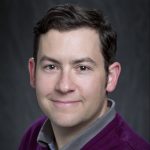
Michael J. Polito, PhD
Associate Professor
Dept. of Oceanography and Coastal Sciences
Louisiana State University
Dr. Polito is an ecologist with a focus on the food web dynamics of marine and coastal ecosystems ranging from Louisiana to Antarctica, and many places in between. He is the Principal Investigator and Project Director for the RESTORE Marsh Food Webs project. In this role, he leads project administration, reporting, and the supervision of student and research technicians. In addition, he oversees bulk and compound-specific stable isotope analysis in support of marsh food web analysis.
Co-Principal Investigators
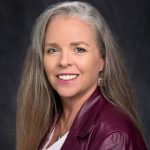
Linda M. Bui, PhD
Professor
Dept. of Environmental Sciences
Louisiana State University
We all know the insect bites that can make an otherwise pleasurable visit to a salt marsh not so pleasurable. The terrestrial arthropod community – specifically insects and spiders – that live on the marsh platform are a vital component of the marsh food web, feeding on plants and providing prey to other organisms. We have been studying insects along salinity gradients since 2015 in relation to the Deepwater Horizon oil spill and that work continues in this project. I’m particularly excited about the insect and spider communities that have come to newly-built marshes. The terrestrial arthropod community is normally hyper-diverse in the marshes of the northern Gulf of Mexico.
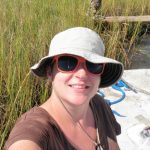
Annette Engel, PhD
Donald and Florence Jones Professor of Aqueous Geochemistry
Department of Earth and Planetary Sciences
University of Tennessee at Knoxville
The microbial communities of salt marshes define biogeochemical processes important in identifying differences in marshes and response to habitat perturbation. Annette Engel conducts interdisciplinary research on hydrocarbon degradation and trajectories following environmental disturbances, e.g., Deepwater Horizon oil spill. Her food web research for this RESTORE project involves molecular genetics methods using a microbial systems biology approach to determine the abundance of major groups of microbes and their biological diversity. She uses stable isotope geochemistry to characterize microbial signatures in water and sediment. To investigate metabolic potential directly from a sample, in addition to ‘omics approaches, she uses classical culturing methods and enzymatic assays.

Olaf Jensen, PhD
Associate Professor
Center for Limnology
University of Wisconsin—Madison
(formerly, Rutgers University, Dept of Marine & Coastal Sciences)
Dr. Jensen is leading the ecosystem modeling component of the project. This component seeks to understand how the effects of marsh restoration and associated freshwater inflow move through the food web. Changes to the abundance of any species can also impact their predators and prey. However, most food webs have some adaptive capacity to respond to perturbations because of functional redundancy, where different species can fill a similar ecological role. Our ecosystem models are based on the widely-used Ecopath with Ecosim framework and are closely tied to field estimates of biomass and community composition of natural and restored salt marshes in Barataria Bay.
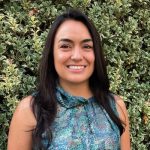
Paola López-Duarte, PhD
Assistant Professor
Department of Biological Sciences
University of North Carolina at Charlotte
Our research team works with others to assess invertebrate, and fish communities in marshes. An overall goal is to determine whether on-marsh nekton communities differ between restored and natural marshes and along a salinity gradient, present only when a nearby freshwater diversion is functioning. My lab examines the otoliths (ear bones) of marsh-resident and marsh-transient fish to evaluate elemental signatures that can help us distinguish between off-marsh areas and on-marsh habitats (marsh edges, creeks, and ponds). Another way we are trying to quantify marsh health and function is by assessing the macroinvertebrate communities. Our samples are teeming with life and dedicated students at UNCC sort and identify these organisms, most of which are insects and small crustaceans that are often used as biological indicators.
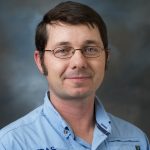
Charlie Martin, PhD
Assistant professor
School of Marine and Environmental Sciences
University of South Alabama
My team’s role in the RESTORE food web is to quantify the abundance and community structure of off-marsh nekton (fishes and macroinvertebrates) and epifaunal organisms, those that live mostly above the marsh sediments. The sample sites differ from those of the on-marsh transects in that they target habitats such as waters adjacent to the marsh, marsh creeks, and marsh ponds. These nekton are sampled using replicated and standardized trawling. We also use suction sampling to quantify the density of organisms living on marsh edges. These data will help determine how trends in species occurrence patterns change with freshwater introduction at a range of restored and unrestored salt marshes. Moreover, these data will be used to construct mass balanced food web models.
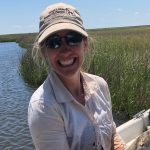
Jill A. Olin, PhD
Research Scientist, Great Lakes Research Center
Assistant Research Professor
Biological Sciences
Michigan Technological University
Saltmarsh nekton can link production resources to higher trophic levels and serve as indicators of marsh function and health. Our group identifies species- and food web-level responses to environmental change by assessing energy transfer between producer and consumer taxa using a combined dietary biomarker approach (e.g., stable isotopes, fatty acids). We work within the food-web team to characterize the ecological functionality of natural and restored marshes by quantifying the trophic structure of the saltmarsh food webs and the degree of residency or habitat use of marsh-dependent fishes in these habitats. We will delineate trophic relationships among saltmarsh taxa using natural and restored habitats and contribute to the mass balanced food web models being developed.
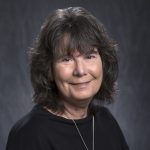
Nancy N. Rabalais, PhD
Professor and Shell Oil Endowed Chair in Oceanography/Wetland Sciences
Department of Oceanography and Coastal Sciences
Louisiana State University
and, Louisiana Universities Marine Consortium
Most visitors to a Louisiana salt marsh are drawn to the plants, birds, and small animals such as snails, mussels, and fish visible on the marsh surface. Below the sediment surface is a community of animals, mostly worms and small crustaceans that make up the benthic infauna (size < 0.5 mm). These organisms are a vital part of the marsh ecosystem with their burrowing activities (supporting healthy marsh soils) and provisioning of food for larger predators. Benthic infauna, because they are confined to a limited area, are considered indicators of marsh health and function. Our work is focused on the infauna within the sediments along pre-determined transects into the marsh at 10- and 50-m distance. Sampling is by core tubes, sieved organisms from the sediments, and microscopic determination of abundance and diversity.

Brian J. Roberts, PhD
Executive Director and Chief Scientist
Ecosystem Ecology and Biogeochemistry Lab
REU Program Director
Louisiana Universities Marine Consortium
Our research team brings an ecosystem and biogeochemical perspective to address questions across the continuum from terrestrial to wetland, estuarine, coastal, and open ocean ecosystems. We are leading the effort to characterize the marsh platform and adjacent water column primary producers. This effort includes the biomass and composition of marsh vegetation, biomass of benthic microalgae and nearby phytoplankton. Additionally, we characterize the soil and water quality in terms of carbon and nutrient conditions. Our role is to characterize how the base of the food web varies with salinity, inundation and restoration. Further, we coordinate our sampling with that of plant litter decomposition and quantification of epibenthic invertebrate colonization of the litter.

Erick Swenson
Associate – Research 5
Department of Oceanography and Coastal Sciences
Louisiana State University
Erick Swenson is responsible for data collection for salinity and water level data to characterize salinity gradients on a real-time basis and characterize hydroperiods of water level with an emphasis on marsh flooding. Marsh flooding along with salinity are major features of both natural and created marshes that determine the types of ecological communities that are established or become established. These data come from the deployment of LSU data sondes within the study area compared to a data base using data sondes deployed by the Louisiana Coastal Protection and Restoration Authority (CPRA) as part of their Coastwide Reference Monitoring System (CRMS). He also coordinates the advisory panel and interactions between the panel members and the researchers. Swenson works with model development and assessment and contributes to community and food web analyses and manuscript preparation.
Support
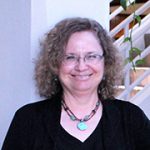
Wendy Morrison
RESTORE Data Manager
Louisiana Universities Marine Consortium
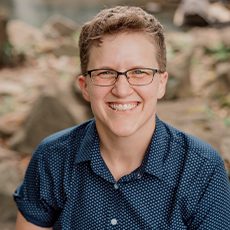
Leslie M. Smith, PhD
RESTORE Web Manager
Your Ocean Consulting, LLC